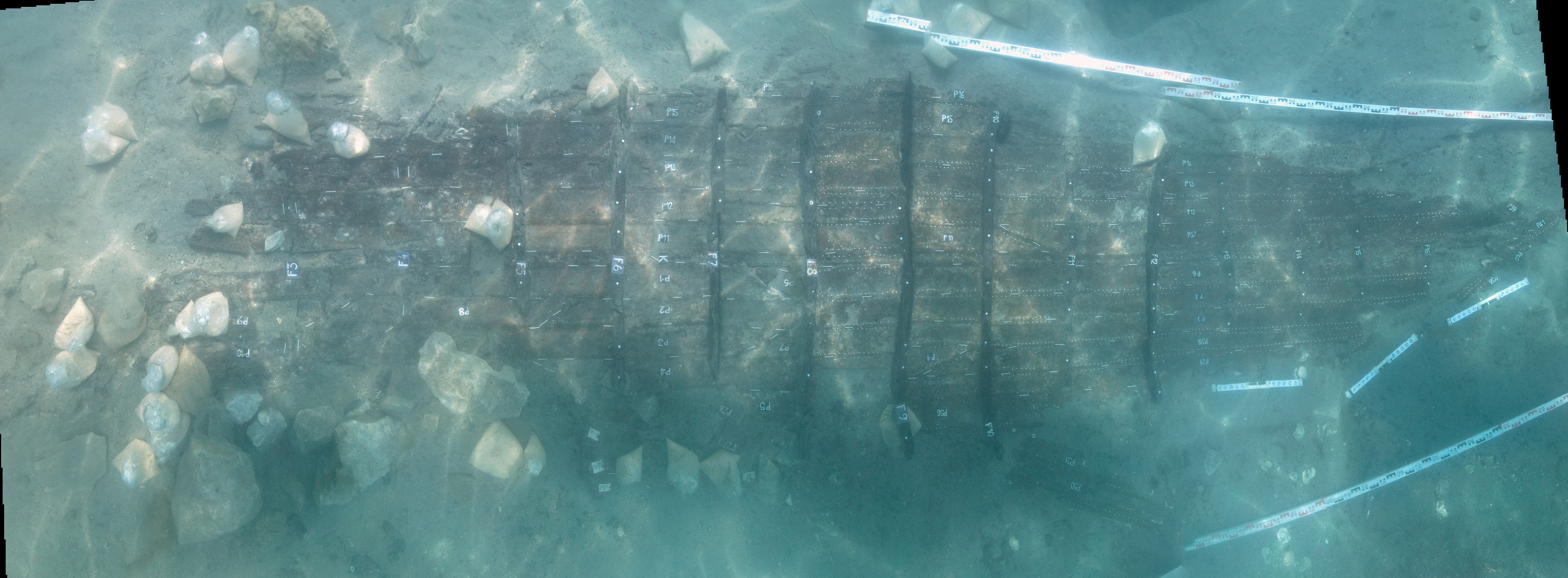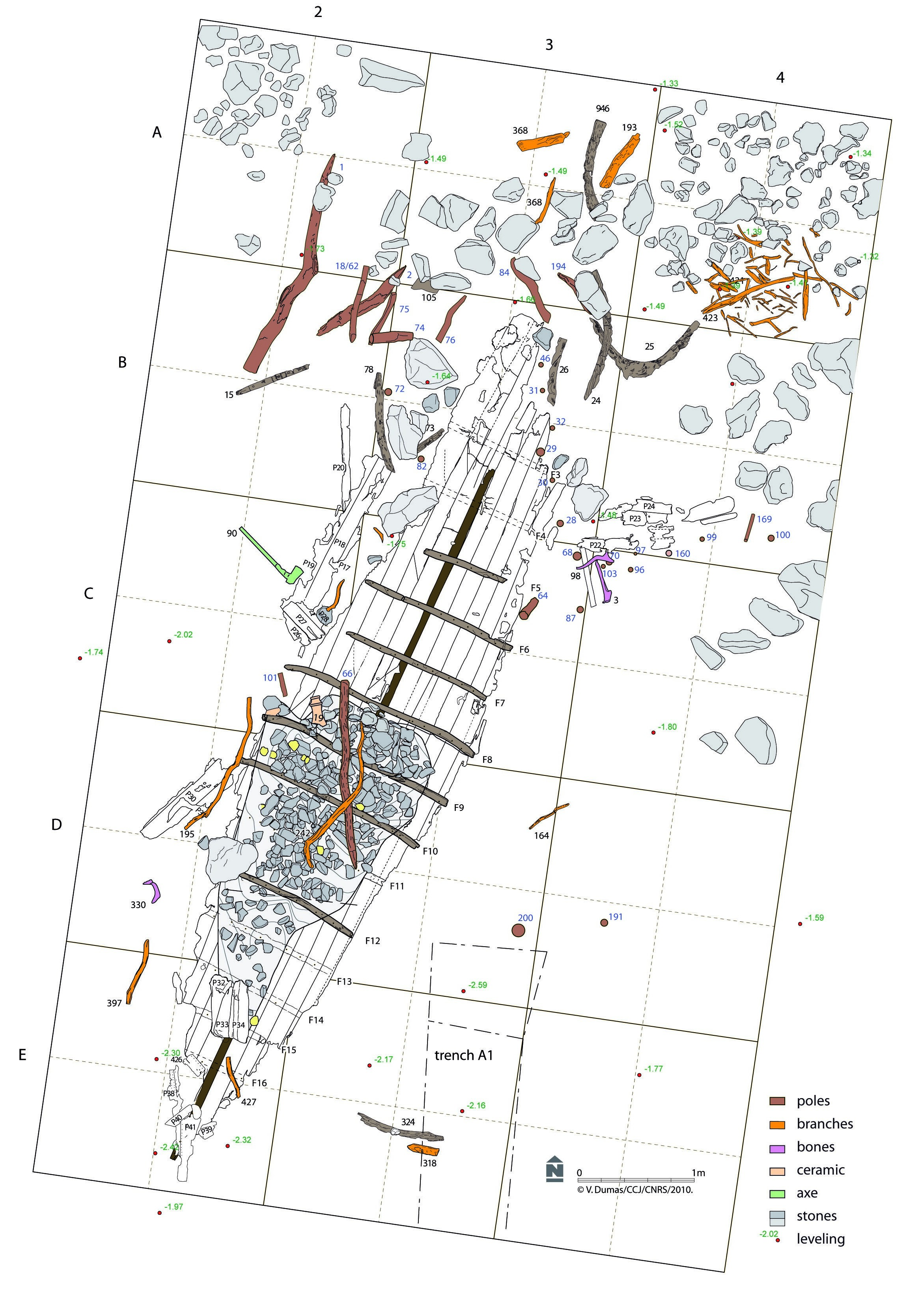< Fieldwork
AdriaS Case Study 2: Ship Caska 1
Sewn/laced boat from the 1st c. AD, sunk on purpose as part of a pier-like structure
Period: Classical Antiquity
The first remains of sewn/laced boats in the Croatian undersea were noticed by Zdenko Brusić in 1966 in Zaton, the port of ancient Aenona, present day Nin. The boat Nin-Zaton 1 was recovered about a decade later, and in the vicinity a second sewn boat was discovered, which was recovered in 1987. The third sewn/laced boat in Zaton was recently discovered and is in the course of excavation. The destiny of the first two boats – one disappeared from the Museum’s storage, and the other is still not conserved - clearly demonstrates that the discipline of nautical archaeology had not sufficiently advanced in Croatia through the end of the 20th century to support the quality and volume of Adriatic maritime cultural discoveries.
The Nin-Zaton boats showed that there is a specific, very simple way of lacing the wooden construction, typical for the surviving Liburnian tradition in Roman times. The other Adriatic finds belong to other traditions, but, together with the Nin-Zaton finds, clearly attest to the survival of the prehistoric tradition up to the Middle Ages.
The discovery of the sewn/laced boat (Caska 1) in the bay of Caska in 2007 showed that the survived tradition was not limited just to the Nin area. The systematic project CissAntiqua, funded by the Croatian Ministry of Culture, the University of Zadar, the Municipality of Novalja and the French counterparts, concentrated the effort into collecting all the available data through the archaeological, geological, geomorphological and geophysical surveys and research on land and underwater. The data are on disposition for the reconstruction of the paleo-landscape of the area, which could highly contribute to our understanding of the reasons for the preservation of the prehistoric shipbuilding techniques.



Show/hide map